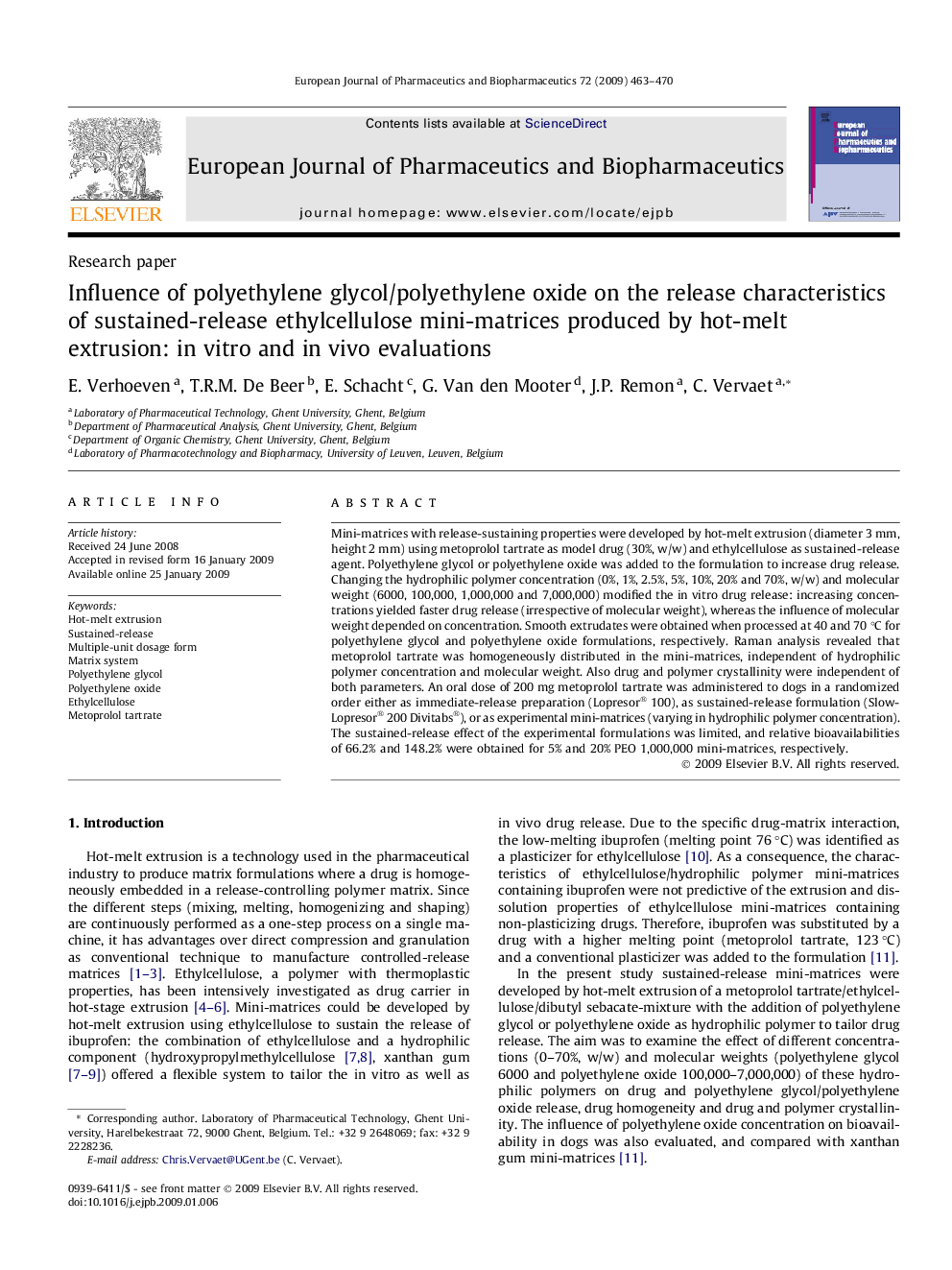| Article ID | Journal | Published Year | Pages | File Type |
|---|---|---|---|---|
| 2084493 | European Journal of Pharmaceutics and Biopharmaceutics | 2009 | 8 Pages |
Mini-matrices with release-sustaining properties were developed by hot-melt extrusion (diameter 3 mm, height 2 mm) using metoprolol tartrate as model drug (30%, w/w) and ethylcellulose as sustained-release agent. Polyethylene glycol or polyethylene oxide was added to the formulation to increase drug release. Changing the hydrophilic polymer concentration (0%, 1%, 2.5%, 5%, 10%, 20% and 70%, w/w) and molecular weight (6000, 100,000, 1,000,000 and 7,000,000) modified the in vitro drug release: increasing concentrations yielded faster drug release (irrespective of molecular weight), whereas the influence of molecular weight depended on concentration. Smooth extrudates were obtained when processed at 40 and 70 °C for polyethylene glycol and polyethylene oxide formulations, respectively. Raman analysis revealed that metoprolol tartrate was homogeneously distributed in the mini-matrices, independent of hydrophilic polymer concentration and molecular weight. Also drug and polymer crystallinity were independent of both parameters. An oral dose of 200 mg metoprolol tartrate was administered to dogs in a randomized order either as immediate-release preparation (Lopresor® 100), as sustained-release formulation (Slow-Lopresor® 200 Divitabs®), or as experimental mini-matrices (varying in hydrophilic polymer concentration). The sustained-release effect of the experimental formulations was limited, and relative bioavailabilities of 66.2% and 148.2% were obtained for 5% and 20% PEO 1,000,000 mini-matrices, respectively.
